Paul Murrell tests the 2018 Hyundai i30 N with pricing, specs, ride and handling, safety, verdict and everything the over-50 driver needs to know.
Summary: Here’s proof that the Koreans know how to build a cracking hot hatch, and then price it under the competition.
2018 Hyundai i30 N
Pricing: From $39,990 (bargain basement territory)
Warranty: Five-years, unlimited km
Safety: not yet ANCAP tested
Engine: 2.0-litre 4-cylinder double overhead cam 16-valve turbo
Power: 202kW at 6000rpm (just about the sweet spot for the category)
Torque: 353Nm at 1450-4700rpm (378Nm @1750-4700rpm on overboost)
Transmission: Six-speed manual (an eight-speed DSG is mooted for next year, but the manual is a delight)
Drive: front-wheel drive
Body: 4335mm (long); 1795mm (wide); 1447mm (high)
Turning circle: 11.6m (a little more than is ideal for a small hatch)
Weight: 1429kg
Towing: not stated
Spare: Temporary space saver
Fuel Tank: 50 litres (less than we’d like, considering the fuel consumption)
Thirst: 8.0L/100km (combined, minimum 95 RON)
seniordriver consumption: 8.5L/100km over 455km
[review]
EVERY NOW AND AGAIN along comes a car that changes all the rules, and your perception of the company that makes it.
Such is the new i30 N from Hyundai.
There is no doubt that vehicles from the Korean company have been steadily getting better and better. Almost every new release is a measurable advance over the one that preceded it, from fit and finish, quality of materials, performance and handling (this last benefiting from local input, and the wizardry of some very clever overseas specialists who are brought in to tune each new model to suit our challenging and often unique conditions).
But one area where the pundits always predicted Hyundai would lag behind was in delivering sheer exuberance in the driving experience.
Well, now we can cross that one off the list, too.
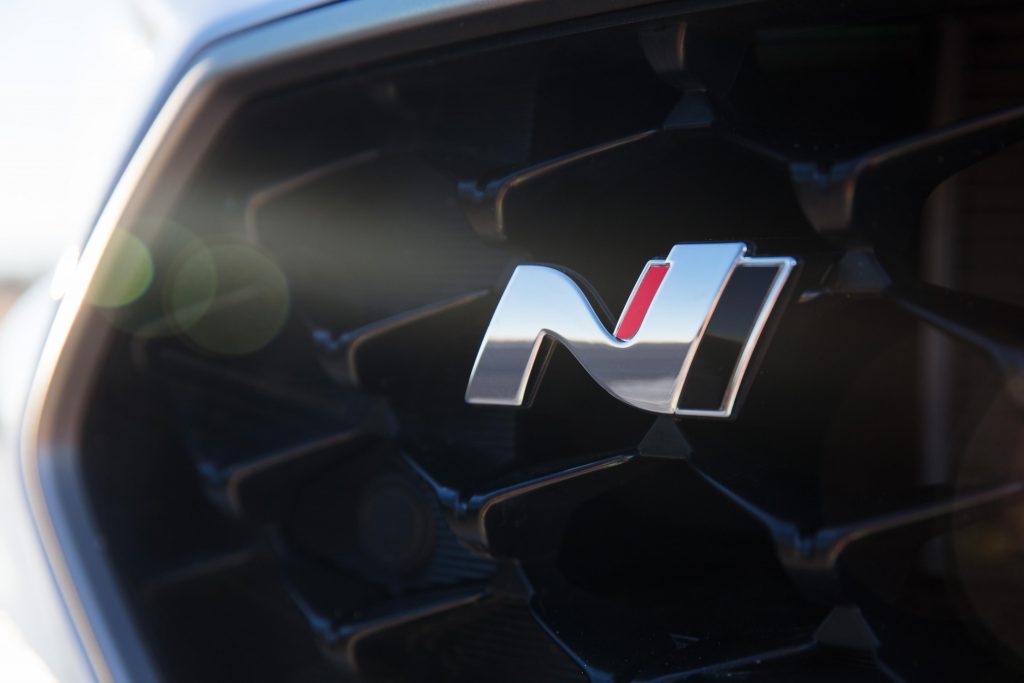
There’s something indefinable about the hot hatch experience.
A hot hatch is usually based on a lesser vehicle that has had a magic wand waved over it. Peugeot proved the principle by taking a perfectly capable hatchback, the 205, and adding a touch of spice to create the GTi. Volkswagen then set the guidelines and certainly the benchmark for hot hatches by taking the more-than-adequate Golf and creating the GTI (okay, imaginative hot hatch names aren’t a strong point for manufacturers, but at least there’s no confusion). Honda also embraced the concept and almost immediately there was a cult-like following for the Civic Type R.
Hyundai’s first attempt at cracking this difficult market is the i30 N. Incredibly, at their first attempt, they seem to have done an amazing job (the “N” by the way, comes from their Namyang testing site, or perhaps from Nürburgring where the final tuning was done; it’s hard to imagine it ever having the cachet of BMW’s “M” suffix – but time will tell).
From the moment you press the starter button (in a hot hatch, an engine start button, so illogical in most other cars, makes perfect sense) you get an instant sense of involvement with the i30 N. It just feels right, and that sensation only increases the more you drive it.
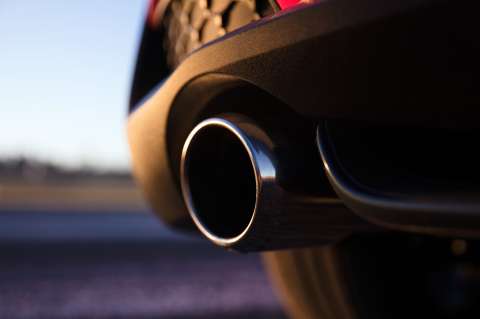
Every time the exhaust crackles, you smile demonically to yourself. When you press a little harder into a corner and feel the eager turn-in, you feel like you’re 18 again – fast, skilled and invincible. The mechanical limited slip differential defies the physics that suggest a front-wheel drive car, driven hard and with this much power, should run wide on every corner and the continuously adaptive suspension keeps things battened down as well, but without straying into kidney-thumping mode. Also helping things along is the rack-mounted and variable power steering and five selectable drive modes.
We don’t know what cars the Hyundai boffins benchmarked (although we could make an educated guess), but they must have driven almost every hot hatch under many different conditions to create such a well-balanced blend. The steering wheel is just the right size and the steering inputs and feedback are nigh on perfect. The gearchange is so well-weighted and precise that you’ll wonder why anyone would opt for an automatic or DSG (not that i30 N buyers will get a choice – it’s a six-speed manual or “buy something else”, although an eight-speed dual-clutch option is tipped for next year). The front bucket seats are cosseting without feeling inhibiting (even if your middle-age spread has spread more than you’d like to admit). There are only two small quibbles. The first is only really relevant if your lust for lost driving skills includes heel-and-toeing – the pedal placement isn’t quite ideal, but since the N blips the throttle for you on downchanges, nobody need ever know it wasn’t you. And we’d prefer the seating position to be a little lower.
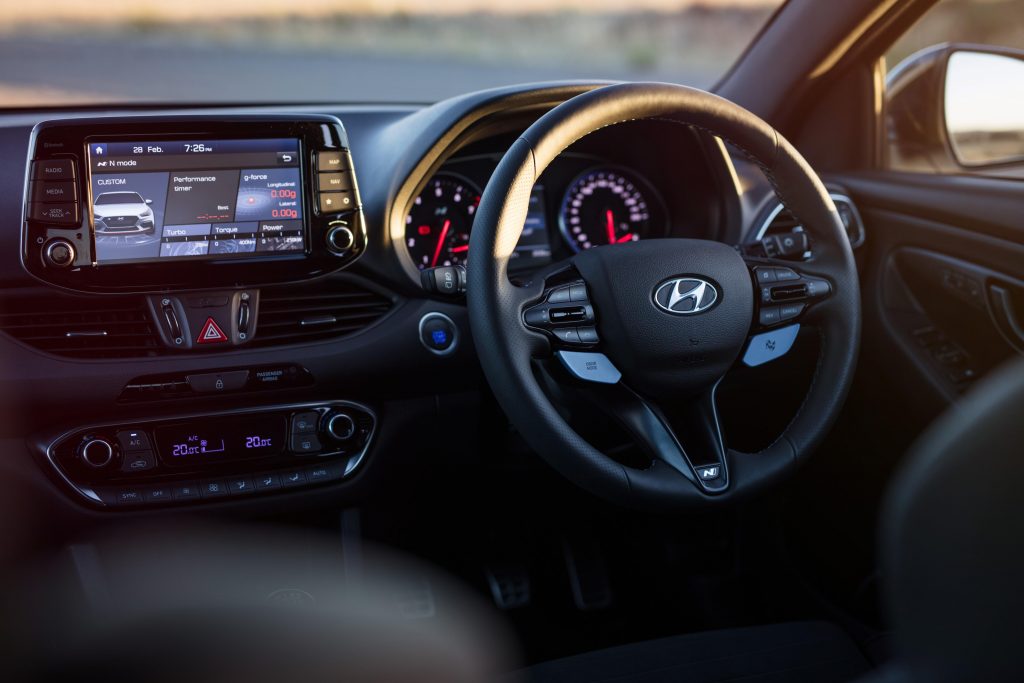
A little short on theatrics.
Part of the hot hatch experience is the sense of anticipation when you plonk yourself into the driver’s seat. The i30 N is good, but a little uninspired. Sure, the largely superfluous electronic shift lights hint at track use and when you open the rear hatch you can point at the (removable) stiffness bar, but hot hatches almost demand lots of red highlights, contrasting stitching and fripperies that are appetisers to the main course; the Hyundai harks too closely back to its lesser siblings with plenty of hard plastics and lack of ornamentation. Naturally, the brake callipers are painted red, the excellent seats are highlighted with blue stitching, the pedals hide behind metal covers, the 19-inch alloy wheels wear serious Pirelli P-Zero tyres and the exhaust exits through dual exhaust tips. Then there’s the body kit with red pinstriping. It’s just that we would have like a little more pizazz (okay, we really do want everything!)
Putting unreasonable expectations aside, everything inside the i30 works just as it should (other than the aforementioned pedal placement). The seats are super supportive and have variable thigh bolsters (but no lumbar adjustment), and importantly for the less limber, the side bolsters aren’t so high as to make access overly challenging. The steering wheel is well fitted with controls and easy to adjust for reach and height. Like other i30s, the ergonomics are generally excellent and tall drivers, even when wearing a helmet for track days, won’t be brushing the roof.
There are twin 12-volt outlets and a single USB connector. The six-speaker sound system is fit for purpose and as much as most people will ever want.
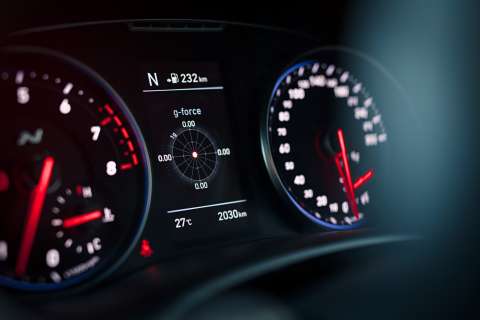
Know what’s going on.
We still love the 8.0-inch touchscreen that sits on what looks like a pedestal mount, but most of the important information is conveyed through the 4.2-inch digital display directly in front of the driver. For bragging rights, the N race computer can store lap times and also display turbo boost pressures, engine temperatures and a range of other information.
Tyre pressure monitoring is standard, but threw up an anomaly in the car we tested. The light was glowing and indicated an offside rear tyre was low on pressure. The readout suggested it was sitting on 32psi, a few psi less than recommended, but the nearside rear tyre was shown at the same pressure, and its light wasn’t lit. We used one of those infuriating preset-attach-and pump tyre inflators at a local servo to get the rears up to the recommended pressure. The warning light went out, but when we checked the pressures with a proper gauge (never trust those at service stations), one tyre was at 34psi and the other at 38.
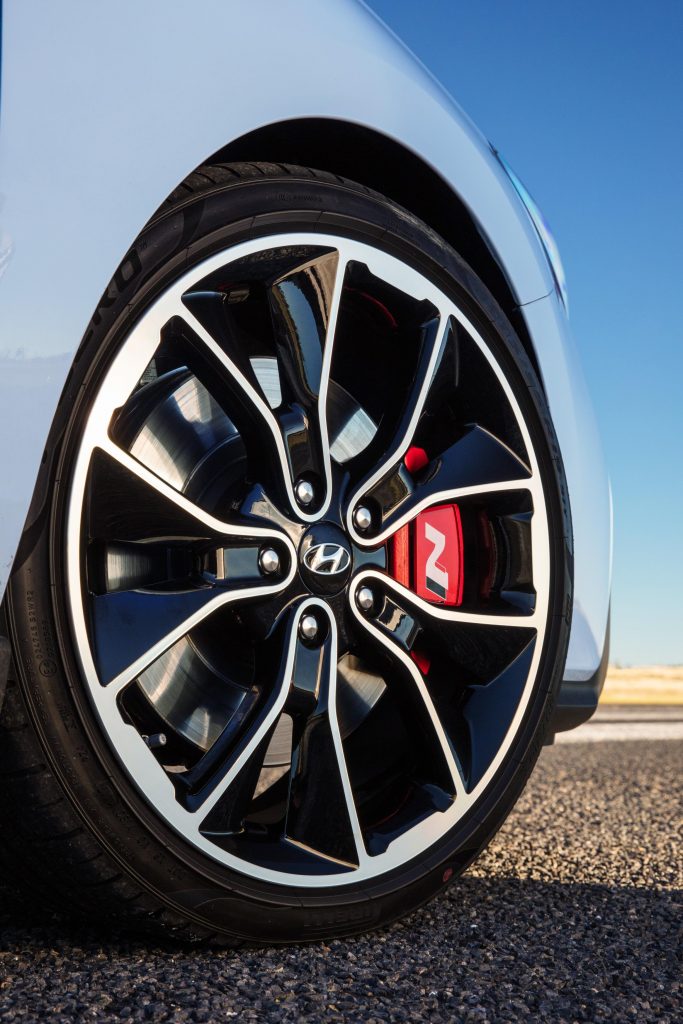
There was another issue with “our” i30 N. A strange noise was discernible from around the windscreen. It sounded much like the noise you get when a large truck is peppering your car with grit. We checked with Hyundai to ask if this particular car had, perhaps, had a windscreen replacement, which could have accounted for the odd noise. We were told that it hadn’t, but a similar issue had arisen with one or two other i30s (we aren’t sure if it is exclusive to the N or across the range) and that Hyundai Australia has identified the problem, developed a fix and issued a dealer advisory. As usual, Hyundai has acted quickly and responsibly to address the issue – well done.
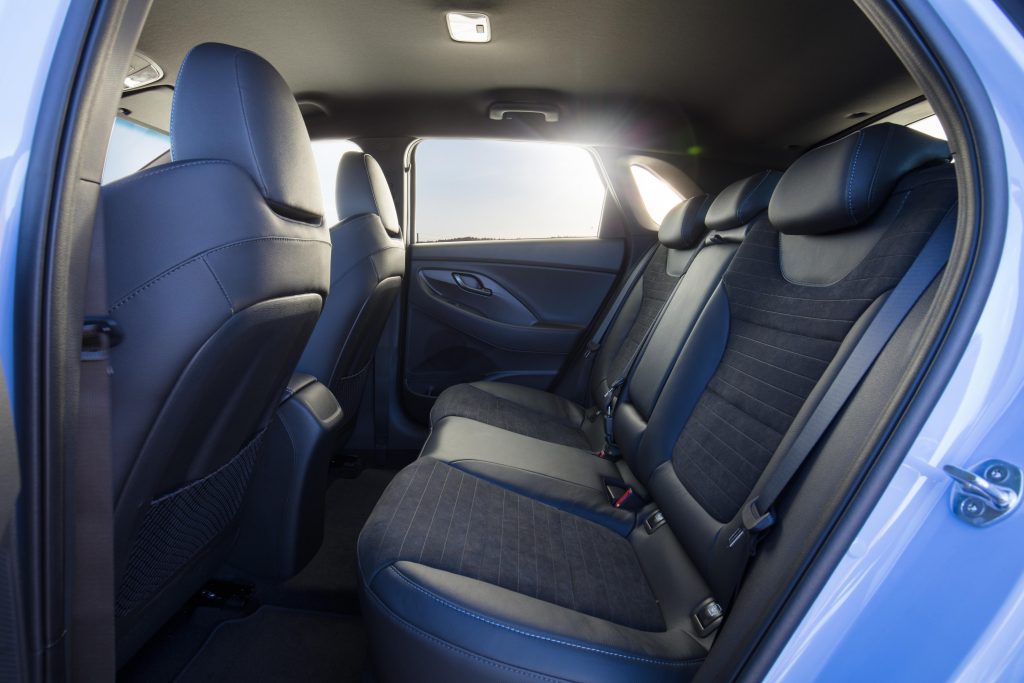
It’s the performance.
seniordriveraus doesn’t usually bang on about performance figures because in the real world, they’re often irrelevant at best, misleading at worst. However, this is a performance car, and many buyers will want to find its limits on the track.
The raw data is reasonably useful, but in the category, not exceptional; it’s the overall experience that impresses so much.
The 353Nm of torque (rising to 378 for up to 18 seconds on overboost) is on tap from just 1450rpm, and that makes for quick response when you mash the throttle. The electronically controlled limited slip differential maximises traction and minimises the dreaded “torque steer” (when the power being sent through the front wheels causes a twitch in the steering wheel as the wheels try to drive straight ahead, rather than follow the steering wheel input). Zero to 100km/h comes up in 6.1 seconds. There’s no shortage of hot hatches that can beat that, but more to the point, it’s 0.4 seconds quicker than a manual VW Golf GTI. The all-important overtaking time for 80 to 120km/h is 7.3 seconds, making for minimal time on the wrong side of the road when overtaking. Power is satisfyingly linear, and well-matched to the manual transmission ratios.
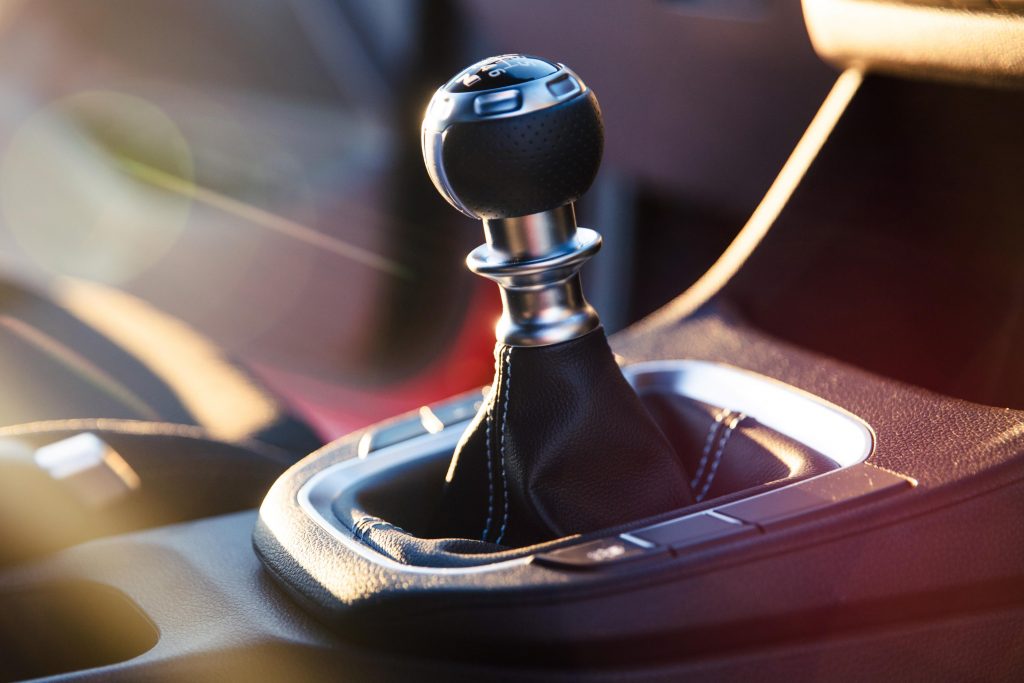
Most buyers will want to use the i30 N as an everyday driver, with occasional fun days at a track. The good news is that it can handle both. Drive modes range from Eco through Normal, Sport, N and Custom settings. N Mode is activated by pressing the chequered flag button on the steering wheel for maximum attack. For everyday duty, the ride is suitably supple, although the trade-off is slightly more body roll. The clutch is light, the gearchanges easy and the steering connected if not lightning fast. At cruise speeds, the N is quiet and composed, coping with road irregularities and potholes without feeling stressed. When you toggle through and select Sport mode, the i30 doesn’t undergo a Jekyll and Hyde transformation; rather it simply becomes a little more purposeful.
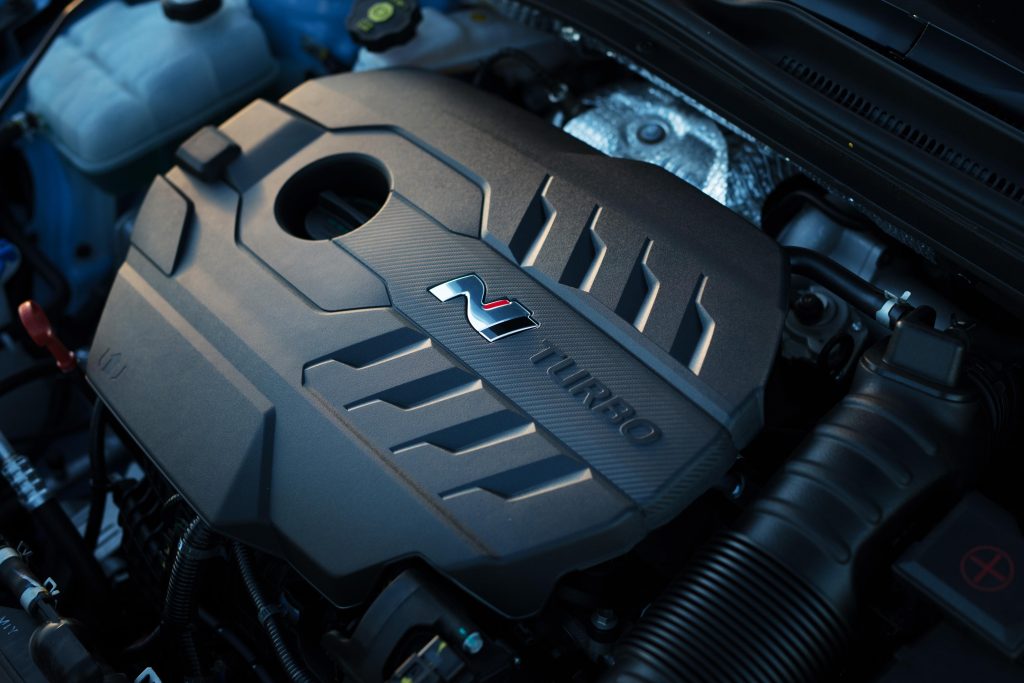
There’s the usual performance car bark from the exhaust, enhanced inside by an electronic sound generator mounted near the windscreen; noise is an integral component of the total experience. Fiddling with the custom settings, apparently you can come up with 1944 possible combinations – we doubt many drivers will ever bother. The rev-matching program can be disabled if you want to impress onlookers with your heel-and-toe technique.
While the P-Zero Pirelli tyres are a good compromise, special Pirelli Trofeo R track tyres and Pagid brake pads will be offered through dealers.

The harder you drive, the more important safety becomes.
The standard i30 gets plenty of safety equipment, and so does the N. There are seven airbags, autonomous emergency braking, driver attention alert and lane keeping assistance.
Add in the $3000 luxury pack for leather and suede on the front seats, along with heating and electric adjustment, driver’s memory system, heated steering wheel, front parking sensors, smart keys and a wireless charging pad (that doesn’t work on my Samsung S6, either because of the technology or the protective case it wears – I’m not sure which).
There’s also a panoramic sunroof option for $2000. I’m certain you won’t want to specify this if you plan to play on a race track – all that extra weight so high up won’t do cornering stability any favours. Metallic paint adds another $495.

Hyundai ownership costs.
Hyundai offers a very good warranty with five years coverage and unlimited kilometres. It also covers track use, although competitive (timed) events are excluded. Servicing is scheduled every 12 months or 10,000 kilometres with capped prices for ten years.
A consideration for over-50s drivers is the weight of the bonnet, and its archaic metal prop. If you have issues with elbows or shoulders, try it out in the showroom.
Summary.
The Hyundai i30 N is a hugely impressive first effort at a true hot hatch, and outstanding value for money at just $39,990 (plus on road costs). Of course, you could always go for a VW Golf GTI Original from $37,490 but you’ll forego the practicality of two extra doors, and the excitement of the i30’s extra 33kW. Or lash out and spend an extra $11,000 on a Honda Civic Type R. But as an all-round package, the Hyundai i30 N has, quite simply, set a new benchmark in the category.
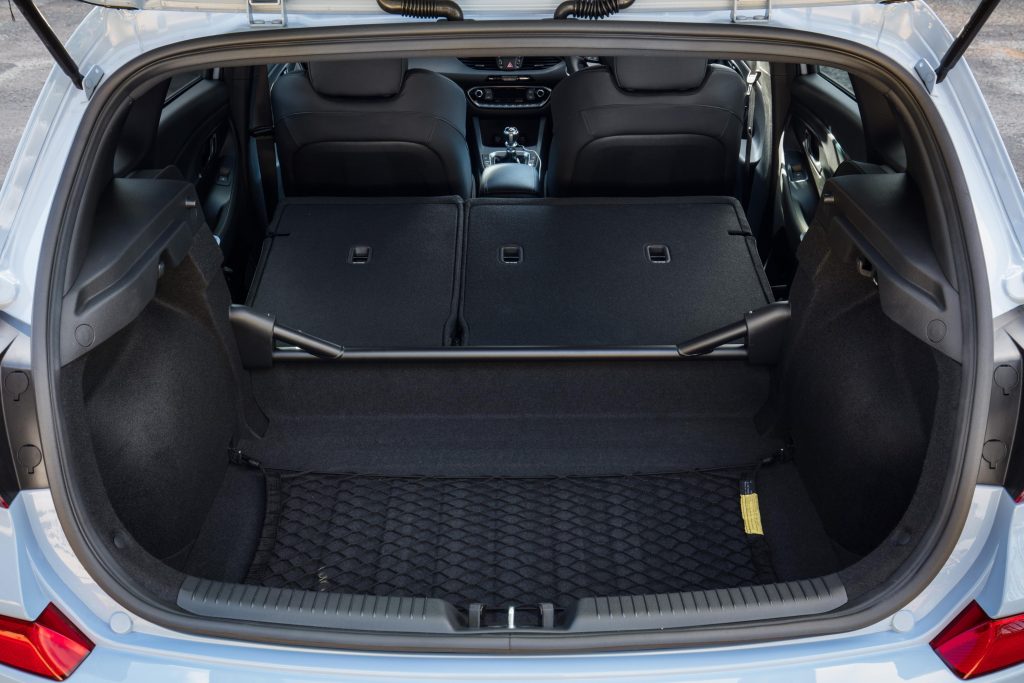
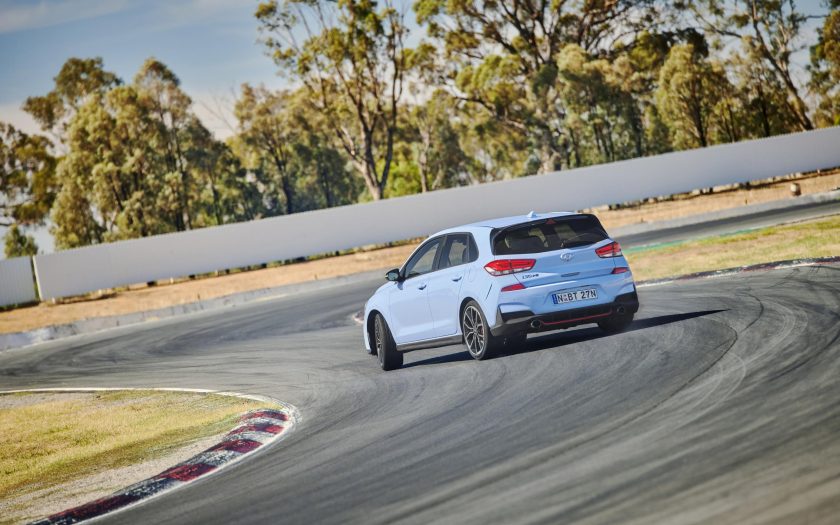
Great review!! Love the detail! But how comfortable would it be to drive Adelaide / Melbourne return in terms of ride comfort and that awesome exhaust note? I have a Golf GTI, and that is fine as an interstate travelling car, but am wondering if that awesome exhaust note might become too annoying on a long trip even though that it what I love about this car, , and maybe the ride slightly too harsh- not sure. I would love to you know your thoughts, as this just might have to be my next car.
Thanks Warren. Most hot hatches can be a bit wearing on a long drive — your GTI not included! Certainly the i30 N ride is very compliant, even over broken surfaces, and the Hyundai people have really achieved a brilliant balance of ride versus handling. As for the exhaust note, it can be toned down, and in cruise mode is unobtrusive. But crank it up through small towns and wake up the locals! If you really want one, get your order in early.
Great story Paul. I can just see you tearing through the Adelaide hills in that car it would have been fun
Yes, Peter, it was a great fun drive through the Hills, but I just want to be let loose in one on a race track – The Bend perhaps?